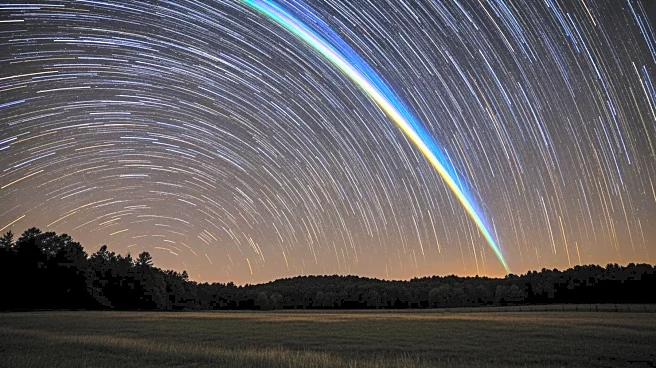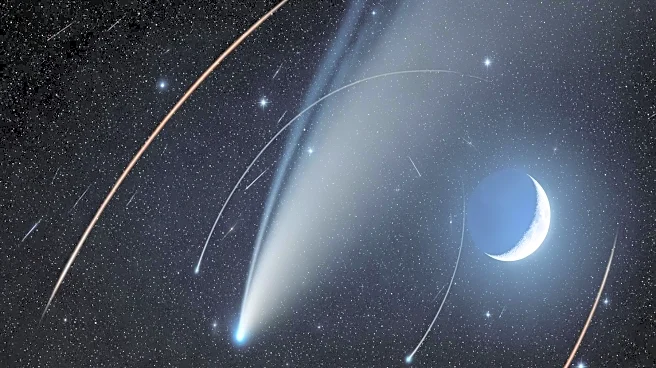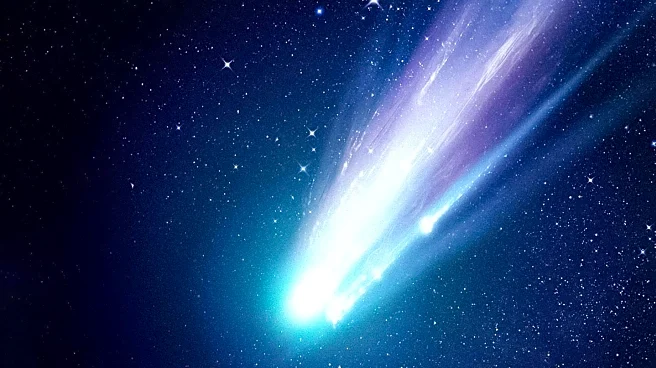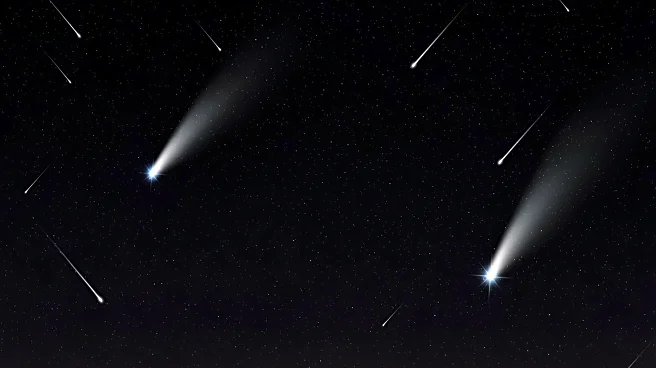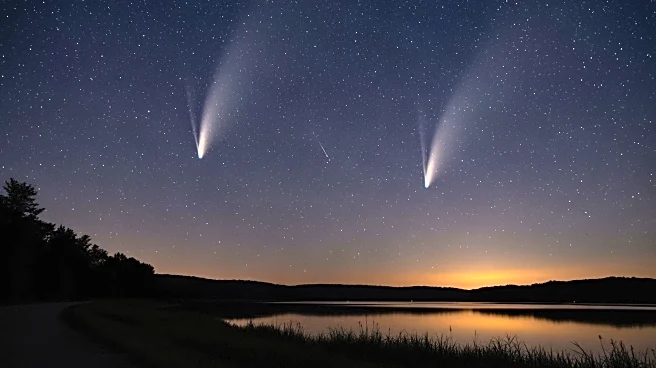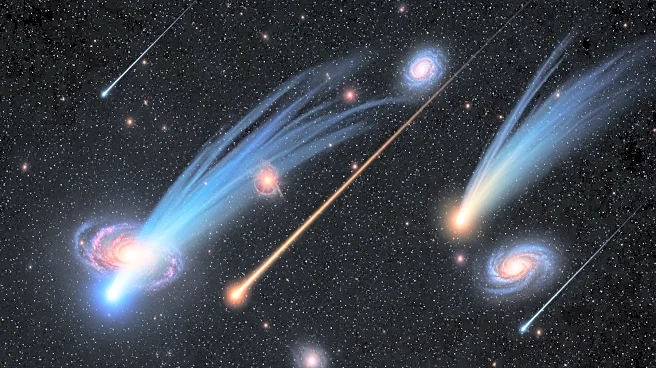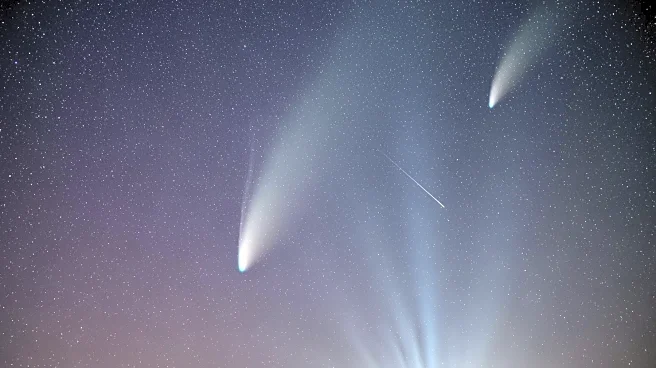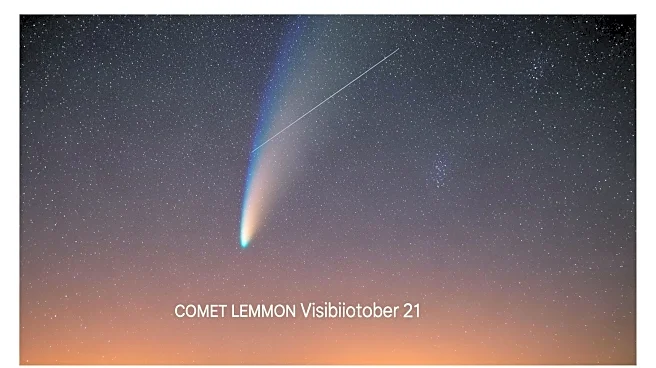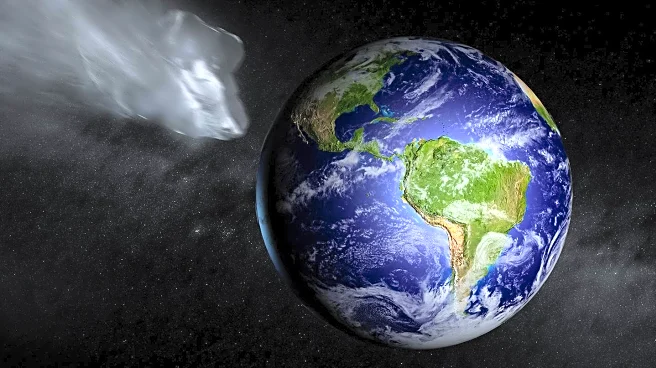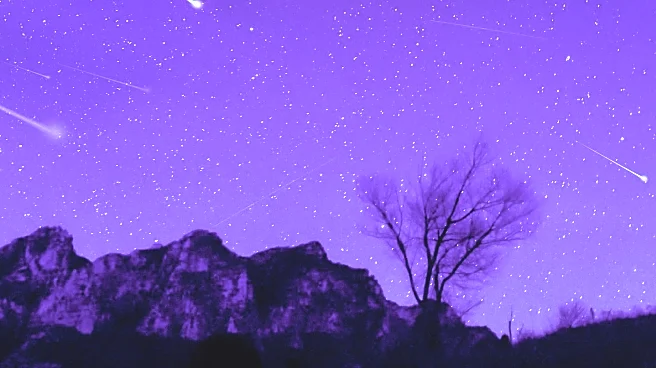What's Happening?
Two comets, Lemmon and SWAN, are currently visible in the night sky, providing a unique opportunity for stargazers in North Carolina. Comet Lemmon, known for its bright green appearance, is best viewed
in the northwest sky after sunset, while Comet SWAN, which is dimmer, is visible in the southwest sky. Both comets are making a close approach to Earth, with Lemmon passing within 56 million miles and SWAN coming even closer at 24 million miles. The visibility of these comets coincides with the peak of the Orionid meteor shower, enhancing the celestial spectacle. Residents are encouraged to use binoculars or telescopes for optimal viewing, especially in areas away from city lights.
Why It's Important?
The appearance of Comets Lemmon and SWAN offers a rare astronomical event that can captivate both amateur and professional astronomers. Such events can increase public interest in astronomy and science, potentially inspiring educational activities and community gatherings centered around stargazing. The visibility of these comets also provides an opportunity for scientific observation and data collection, contributing to our understanding of cometary behavior and characteristics. Additionally, the event highlights the importance of preserving dark sky areas, which are crucial for observing celestial phenomena without light pollution.
What's Next?
As the comets continue their journey, they will remain visible until early November, with peak brightness expected around October 31 to November 2. Stargazers are advised to monitor weather conditions for clear skies and plan viewing sessions accordingly. Astronomy enthusiasts may organize events or workshops to educate the public about cometary science and the significance of such celestial events. Observatories and science centers might also offer special programs or viewing nights to engage the community.
Beyond the Headlines
The appearance of these comets underscores the dynamic nature of our solar system and the ongoing discoveries made possible by advancements in astronomical technology. It also raises awareness about the importance of space exploration and the potential for future missions to study comets up close. The event may spark discussions about the preservation of natural night skies and the impact of urban development on astronomical observations.
